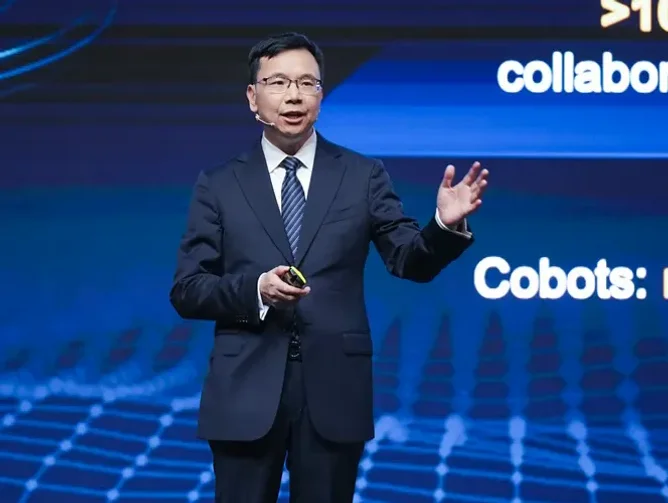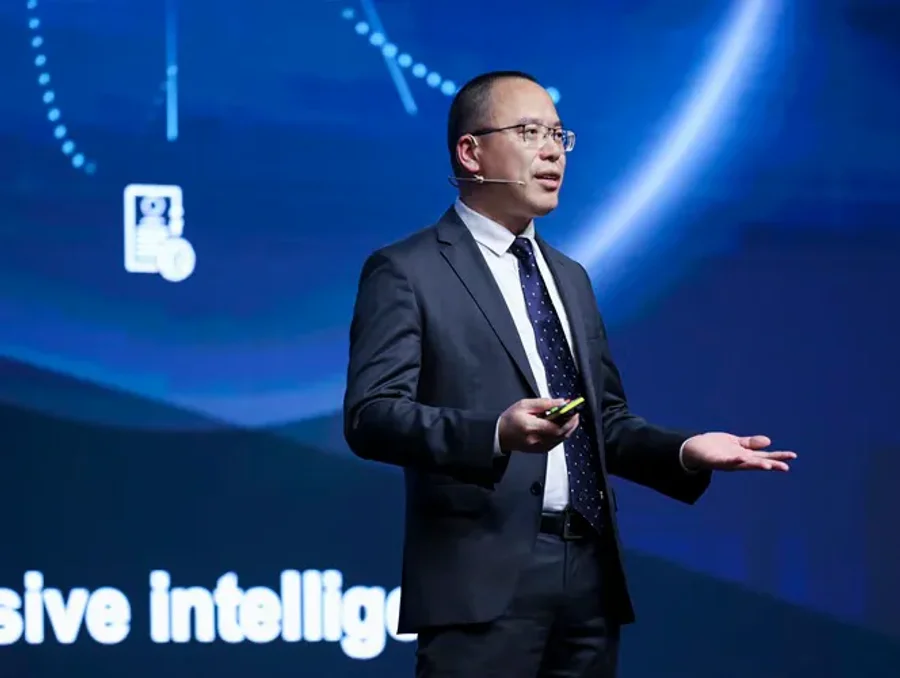Huawei outlined to atteendees of its Mobile Broadband Forum how 5.5G has the ability to provide ROI for telcos and help them be a part of the mobile AI era.
The rapid evolution of mobile connectivity has ushered in a new era defined by new capabilities. Exemplified by 5G, consumers are getting remarkable levels of connectivity on the move, allowing new ways to work, live and play.
Yet despite the improvements in speed and connectivity that 5G brought, it still grapples with challenges. Infrastructure complexity, reliability, and stability are still faced, with these hurdles particularly pronounced in densely populated areas where network congestion can lead to frustrating user experiences.
In this context, Huawei’s recent 15th Mobile Broadband Forum (MBBF) 2024 held in Istanbul emerged as a significant event, as the Asian tech titan revealed to the thousands of attendees solutions that can usher in a technology that stands to ease those pressures and open up new avenues of monetisation for telcos: 5.5G.
The promise of 5.5G
5.5G, also known as 5G Advanced, is the next evolutionary step in mobile network technology.
It offers significant enhancements in network capabilities, including faster speeds with 10 Gbps downlink and 1 Gbps uplink rates, increased network capacity and native intelligence for improved network performance all while maintaining low latency and high reliability.
This next iteration promises to address many of the shortcomings inherent in current 5G deployments while unlocking new business opportunities for telecommunications providers.
“All the mobile operators need to be ready for this new change,” guest speaker at MBBF Ali Taha Koç, CEO of Turkcell told the audience of the powers of 5.5G.
5G, although lauded for its abilities, has been mired in inabilities for providers to really monetise the connectivity beyond 4G, despite substantial investments in infrastructure.
Yet, the 2024 MBBF event showed how the new connectivity benefits from 5.5G bring about new applications for both monetisation, and even the introduction of mobile AI.
Monetising the spectrum
During the conference, Huawei made the case that this new technology they are delivering is helping telcos see a better return on their investment (ROI) and so, although the infrastructure for 5G can be costly, the money will follow.
Yang Chaobin President Of ICT Products and Solutions Huawei gave one such example of concert goers. When everyone in a stadium or tens of thousands is trying to access the network, the resulting traffic means that everyone is getting poor speeds and thus someone who would want to live stream the event would be left unavailable to do so.

However, with 5.5G, Yang highlighted how telcos can offer add-on services with 5.5G that gives users VIP access to have better speeds for customers willing to pay a premium for it as part of their package.
This, however, is where Huawei went into a large part of the promise of 5.5G: mobile AI.
5.5G and its AI relationship
“It’s no coincidence that AI and 5G blossomed at the same time – AI needed the 5G infrastructure,” Alex Sinclair, CTO at GSMA said during his keynote speech.
This comes in twofold, firstly, in AI being applied to the network, and secondly, for the network’s ability to deliver AI on the go.
“We need networks to deploy AI but also AI to manage networks,” Turkcell’s Ali explained.
The concert example is one that highlights the former. With AI working over networks, then the AI can use things like congestion to understand when a user might be at a concert or sport game to then begin offering this upgraded add-on for them.
AI can equally be applied in network architecture to equally help with efficiency and performance in such scenarios. Already, Huawei is working with companies like Vodafone Italia to implement Gen AI to help in the delivery of Vodafone intelligent network assistant, and AI based digital assistant that gives instant access to network knowledge based summary.
This AI then feeds into the pursuit of mobile AI.
“If we want to make AI available anytime, anywhere…we need to optimise mobile networks,” Ken Hu, Rotating Chairman of Huawei said in a recorded message to the conference.
The delivery of efficient, reliable, and speedy AI services when not connected to traditional broadband networks requires a robust and advanced mobile connectivity infrastructure.
This is primarily because AI applications, especially those leveraging large language models and complex neural networks, demand significant computational power and data processing capabilities. To function effectively in mobile environments, AI applications need a network that can handle high-speed data transmission with minimal latency. This is where 5.5G comes into play.
With its promised speeds of up to 10 Gbps and latency as low as 5 milliseconds, 5.5G can facilitate the rapid exchange of large datasets between mobile devices and cloud-based AI systems.
This allows for enterprises to leverage the power of AI into their operations when in an out-of-office scenario.
“If we want to make AI available anytime, anywhere…we need to optimise mobile networks.” – Ken Hu, Rotating Chairman of Huawei said in a recorded message to the conference.
Moreover, the enhanced capacity of 5.5G networks, supporting up to 100 billion connections, allows for the simultaneous operation of numerous AI-enabled devices and sensors, enabling edge computing and further opening up the long-awaited internet of things (IoT) revolution and all the smart functions or insights this can offer.
Addressing infrastructure challenges
Despite the exciting prospects of 5.5G, the transition from existing 5G networks is not without its hurdles.
Infrastructure complexity remains a significant barrier; operators must navigate the intricacies of deploying new technologies while ensuring compatibility with legacy systems.
Moreover, achieving reliability and stability in high-density areas is crucial for realising the full potential of 5.5G.
Huawei’s commitment to addressing these challenges and ushering in 5.5G was demonstrated at MBBF 2024 through a launch of advanced products designed specifically for 5.5G networks and the mobile AI era.
The introduction of industry-firsts were plentiful, as Huawei announced antennas such as the C-band 400MHz UGG Blade AAU, which enables single-antenna Massive MIMO deployment across all sub-6 GHz bands, plus the Sub-1G M-MIMO that enhances coverage and improves downlink, uplink, and low-latency experiences, supporting comprehensive access across all Radio Access Technologies (RATs) and ensuring IoT connectivity.
With those two launched under an umbrella of the 5G-AA Solutions, Huawei also announced:
5G-AA SOLUTIONS
- The U6GHz AAU integrates over 1,500 antenna elements and advanced MU-MIMO algorithms. It supports capacities up to 100 Gbps and speeds of 10 Gbps, ensuring reliable indoor coverage aligned with C-band frequencies.
- LampSite X introduces Passive IoT (P-IoT) capabilities for enhanced indoor digital intelligence. It supports 10 Gbps access and allows for quicker asset stocktaking compared to traditional solutions.
- EasyAAU is the industry’s lightest AAU product, designed for simplified mid-band deployment. Its reduced weight facilitates rapid installation, achieving faster delivery times and doubled capacity in both urban and rural areas.
- The Integrated Antenna and Microwave (IAM) solution combines antennas with E-band microwave units in a single unit. This integration reduces installation weight by 30% and space requirements by 50%, while supporting all-beam auto-seeking.
- MAGICSwave is the first full-duplex microwave solution that enhances spectral efficiency using super-isolated antennas. With capacities up to 50 Gbps, it meets the increasing demand for data transmission in the Mobile AI era.
- RuralCOW offers a one-box solution for rural network deployment by integrating fronthaul and radio units. This approach eliminates the need for backhaul and significantly reduces site costs in remote areas.
- The Agent-based Digital Engineers Team leverages intelligent RAN Agents for unattended maintenance and real-time network optimisation. This enhances operational efficiency and service reliability.
- Ambient Site links a site’s main equipment with its antennas and power supplies. This full-domain digital solution enables visualised site-level sensing, improving energy efficiency and user experiences through comprehensive digitalisation.
These innovations are set to bring new levels of connectivity to previously offline users, opening up new opportunities for them and new markets for telcos.
Mobile for AI and AI for mobile
As the telecommunications industry prepares for the widespread adoption of 5.5G, the integration of AI into mobile networks emerges as a key focus area.
Not only does it expand on current capabilities and open up new area of opportunity within them, but its faster speeds and reliability also makes industries like robotics and autonomous vehicles possible.
While challenges remain in the transition from 5G to 5.5G, Huawei’s initiatives and announcements at the MBBF indicate a commitment to overcoming them, and the economic imperative in doing so.
“Mobile AI is on the horizon. We will continue to work with all industry partners and innovate to promote the integration of 5.5G and AI,” said Cao Ming, Vice President of Huawei and President of Huawei’s Wireless Solution.



